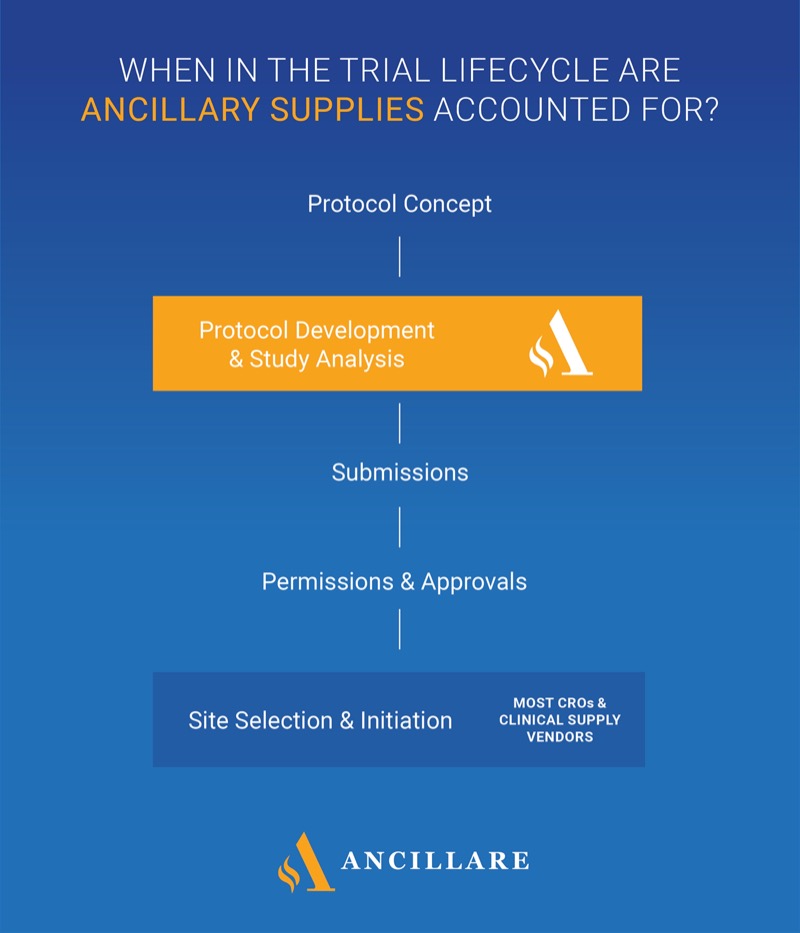In these moments of flux, some teams scramble to take action. Hurried decisions may take care of supply challenges they are dealing with in that particular moment, but do not solve long-term problems. Others cling to convention, hoping that established processes will maintain structure and familiarity amidst the chaos of delays, shortages, and interruptions. Staying the course has its merits, but still does not address the underlying issue. And when all is said and done, the patient pays the price for every milestone missed.
Supply chain disruptions are not going away. Entities conducting clinical trials must reevaluate how ancillary supplies fit into their clinical supply chain. And through that process, they may discover strategies that could be saving time, money, and resources.

Different Responses to Change
Any well-planned supply chain is built on a foundation of risk management. Contingency planning helps protect the flow of supplies from the impact of unexpected events and circumstances. For instance: early in the COVID-19 crisis, Ancillare anticipated the strain on the global supply chain and took measures to ensure vaccine trials would be properly supplied and Sponsors could meet their accelerated timelines.
The pandemic shed acute light on why preparedness matters. But the real solution to strengthening clinical supply chains goes a few steps further, bringing ancillary supplies back to the planning phases of a trial. Proactive planning takes a holistic view of the individual trial, the Sponsor’s entire program, and the ecosystem surrounding it (including past trial data, regulatory factors, and more).
CTASC™ as a Business Strategy
Clinical Trial Ancillary Supply Chain (CTASC™) is a key component of a well-planned clinical supply chain. The CTASC model blends proven supply chain strategies, data and technology, and human insight to innovate and optimize in the moment — and over time. Unlike traditional approaches to sourcing and managing ancillary supplies for clinical trials, CTASC is not just about making sure the right item is available and gets where it needs to go. Rather, it is designed to be implemented at the earliest stages, looking at the big picture to identify efficiencies from the start. Sponsors realize significant time and cost savings, and benefit from the operational efficiencies of a single vendor.
Decentralized Trials: Ensuring an Integrated Supply Chain
Sponsors conducting decentralized clinical trials must be able to count on their clinical supply vendors to coordinate necessary items in a highly organized fashion to maintain the integrity of the trial and its data. The CTASC model accounts for the specific configurations needed for the trial’s protocol as early as possible so that supplies are sourced, produced, kitted, labeled, and shipped according to the trial’s timeline. Single patient kits are assembled with precision and consistency for safety, compliance, and data quality.
Ancillare now offers Direct-to-Patient Kitting for global sites. Contact us to learn more.
Clinical Supply Chain Is Changing. Your Strategies Should, Too
Since its founding, Ancillare has innovated on behalf of Sponsors. Now, as the industry adapts to a supply chain forever changed, the ability to think several steps ahead has never been more necessary. Speak with our experts to find out how your trials can benefit from a fully-integrated CTASC.


